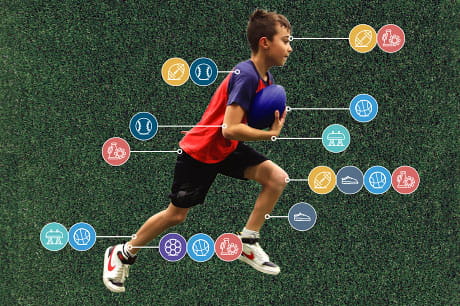3 common causes of ankle pain
Ankle pain got you down? Here are three common causes, tips for healing at home and advice on when to see a doctor.
You may not think much about your ankles, even though you rely on them every day to stand, walk, climb stairs and exercise. It’s when you have pain, swelling or discomfort in one or both ankles that you notice how crucial they are to your daily life.
If you don’t have an obvious injury, it may be difficult to pinpoint the cause of your ankle pain or know what you can (or should) do about it.
Dr. Amanda Moyer Holleran, an orthopaedic surgeon at Geisinger who specializes in treating conditions affecting the feet and ankles, is here to help.
3 common causes of ankle pain
Pain in your ankles can be caused by an injury, such as a sprain or overuse, or a medical condition, like arthritis.
“While these are common causes of ankle pain, it’s always a good idea to see a doctor to confirm a diagnosis, especially if the pain is affecting your day-to-day activities,” notes Dr. Holleran.
If you’re experiencing pain and discomfort in your ankle, here are some potential causes:
1. Ankle sprain
Ankle sprains are one of the most common causes of ankle pain, and they make up a high percentage of ankle injuries.
“A sprain occurs when the ligaments in your ankle are stretched or torn — like when you twist your ankle, which causes pain, swelling or bruising,” says Dr. Holleran.
You can often treat a sprained ankle at home; however, you may need a doctor’s evaluation if you’ve severely sprained your ankle or if the pain isn’t improving through self-care.
“If pain and discomfort are severe, you may be dealing with a fracture or broken bone,” adds Dr. Holleran.
2. Overuse injuries
If you’re training to run your first half marathon or you jumped into a new fitness routine too quickly, the pain, discomfort and swelling in your ankle may be due to an overuse injury.
Unlike a sprain, an overuse injury tends to come on gradually and after the activity (like running too much too soon). Often, it can be treated at home with some rest and at-home treatments, but contact your doctor if your pain doesn’t go away.
“Overuse injuries can be prevented,” says Dr. Holleran. “Make sure you’re easing into new activities, stretching before and after the activity and that you have the right footwear for your feet.”
3. Ankle arthritis
Arthritis, or inflammation and swelling in your joints, can also cause ankle pain and, over time, can even lead to your joints wearing down. There are a few types of arthritis that may cause pain in your ankles, but osteoarthritis is most common.
“Osteoarthritis forms when the protective cartilage between your bones, which acts as a cushion, wears down,” explains Dr. Holleran. “Symptoms include pain and stiffness that may be worse in the morning or after sitting for a while, as well as swelling and difficulty walking.”
Another form of arthritis that can affect your ankle joints is called gout.
Gout occurs when there’s a buildup of uric acid in the body. During a gout attack, you’ll often experience sudden and severe pain, swelling, redness and tenderness in the affected joint — typically at the base of the big toe.
“Gout can affect other joints, too, including the ankles,” says Dr. Holleran. “If you’re experiencing sudden and severe pain in a joint, or your joint is hot to the touch and inflamed, contact your doctor.”
Treatments for arthritis in the ankle can range from lifestyle changes and physical therapy to medications (oral or topical) and even ankle replacement surgery, for more advanced cases.
Treating ankle pain at home
For quick relief from pain at home, the RICE method is often recommended. This includes:
- Rest – Take a break from physical activity and avoid putting weight on your ankle as much as possible.
- Ice – Ice can help reduce swelling and pain. Place a bag of ice or an ice pack on your ankle for 20 minutes at a time, four to eight times per day.
- Compression – To help reduce swelling, wrap your ankle with an elastic bandage. Just make sure it’s not too tight.
- Elevation – When possible, keep your injured ankle raised above your heart to reduce swelling.
“Over-the-counter medications, like acetaminophen or ibuprofen, can also help reduce swelling and pain,” adds Dr. Holleran. “And when your ankle is feeling better, be sure to ease back into activity slowly.”
Think your ankle pain is due to arthritis? Talk to your doctor. They can help you find the right methods to ease arthritis pain so you can get moving again.
When to call your doctor
If you’ve been dealing with ankle pain for some time, it’s smart to reach out to your doctor for diagnosis and treatment.
“If you’ve self-treated at home with the RICE method and over-the-counter pain medications and your pain hasn’t improved within 2 to 3 weeks, give your doctor a call,” advises Dr. Holleran. “They can help connect you with the treatment you need to find relief from your symptoms.”
Next steps:
Meet Amanda Moyer Holleran, MD
Cooped up? Here’s how to (safely) exercise at home
Learn about foot and ankle pain care at Geisinger





